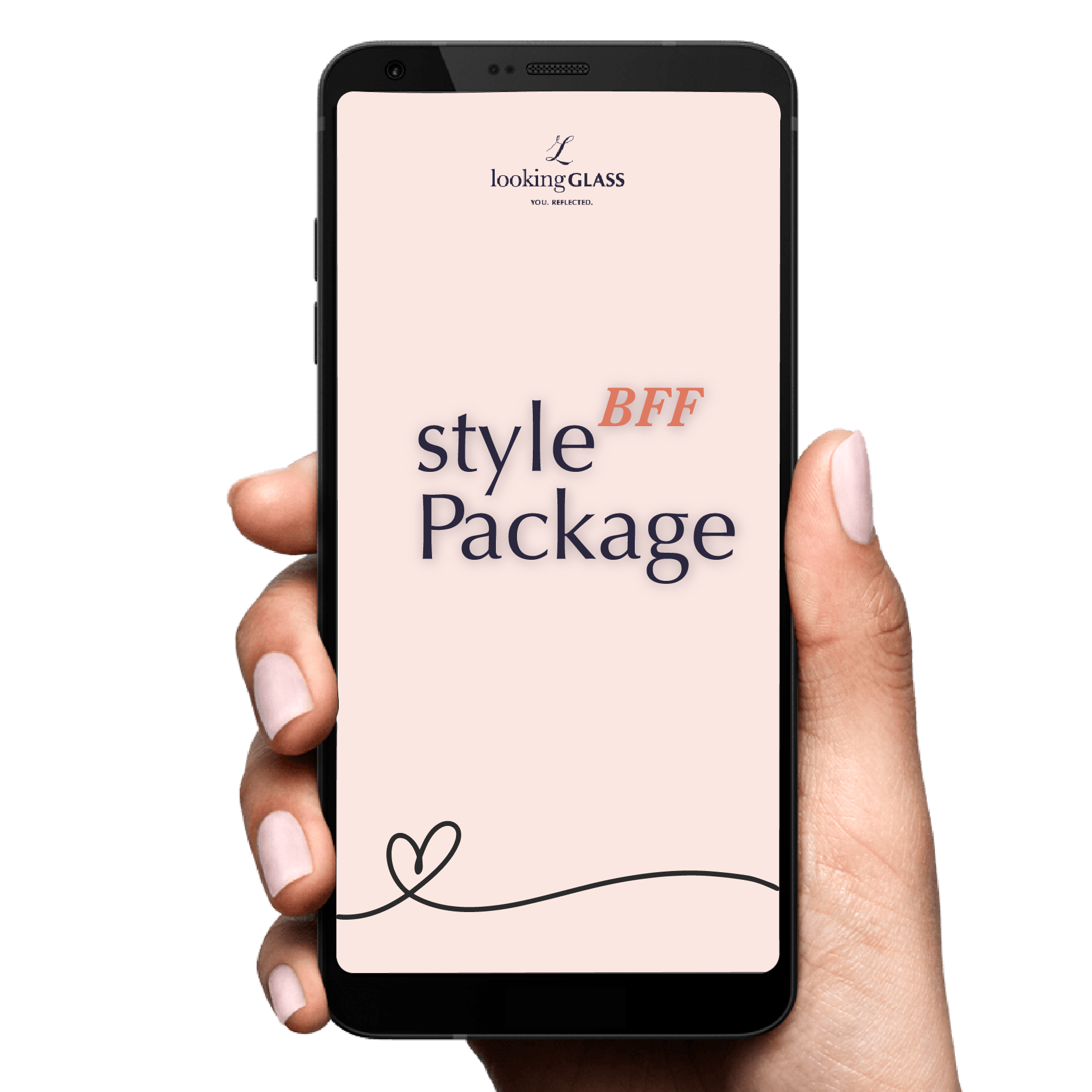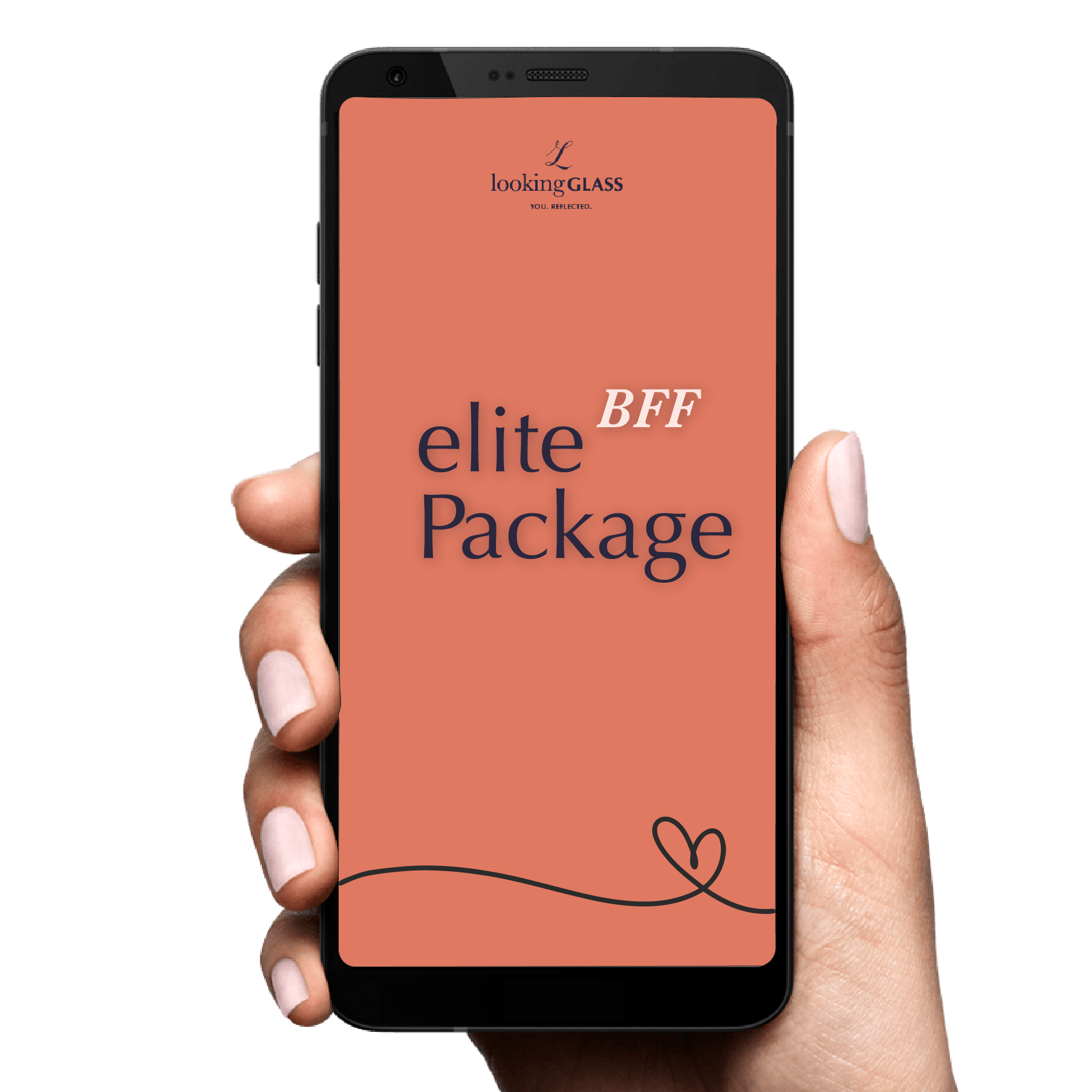Step into the future of fashion with a thought-provoking exploration: Can AI dress you better than yourself? In a world where technology continues to revolutionize every aspect of our lives, the intersection of artificial intelligence and personal style is a fascinating realm to delve into. Join us on a journey where algorithms meet aesthetics, as we unravel the potential of AI to enhance your wardrobe choices. Discover how machine learning and data analysis can offer personalized fashion recommendations tailored to your unique taste. Are you ready to embrace the AI stylist and unlock a whole new dimension of sartorial sophistication?
The intersection with artificial intelligence (AI) has introduced a myriad of possibilities, transforming the way we approach personal styling. As technology continues to permeate every aspect of our lives, the question arises: Can AI surpass human intuition when it comes to dressing well? In this article, we'll delve into the definition of AI in fashion, explore its role in personal styling, and dive into the captivating debate surrounding AI's capacity to outdress human intuition.
AI in Fashion
Artificial Intelligence in fashion refers to the application of advanced algorithms and machine learning techniques to analyze data and make predictions or recommendations related to style, trends, and personal preferences. From virtual try-on tools to personalized product recommendations, AI is revolutionizing the way consumers interact with fashion. By leveraging vast amounts of data, including social media trends, purchase histories, and even weather forecasts, AI systems can offer tailored suggestions to users, enhancing the overall shopping experience.
AI's Role in Personal Styling
The integration of AI in personal styling has ushered in a new era of convenience and customization. Through virtual styling platforms and mobile apps, users can receive personalized outfit recommendations based on their body type, style preferences, and occasion. These AI-driven solutions often incorporate computer vision technology to analyze clothing items and suggest cohesive ensembles. Additionally, some brands utilize AI-powered chatbots to provide instant fashion advice and assistance, further streamlining the shopping process.
Can AI Outdress Human Intuition?
The notion of AI potentially surpassing human intuition in the realm of fashion is a topic of intense debate among industry experts and consumers alike. On one hand, proponents argue that AI's ability to process vast amounts of data and detect nuanced patterns allows it to offer more accurate and relevant style recommendations than human stylists. Moreover, AI systems can continuously learn and adapt based on user feedback, refining their suggestions over time.
Conversely, skeptics contend that fashion is inherently subjective and deeply rooted in human emotion and creativity, qualities that AI struggles to replicate. While AI algorithms excel at analyzing data and identifying trends, they may lack the intuitive understanding of individual preferences, cultural influences, and emotional connections to clothing that humans possess. The art of styling involves more than just following trends; it requires the ability to evoke emotion, tell a story, and express one's unique identity through clothing choices.
As the debate rages on, it becomes evident that the relationship between AI and human intuition in fashion is not necessarily one of competition, but rather collaboration. While AI can offer valuable insights and streamline certain aspects of the styling process, it ultimately complements rather than replaces human creativity and intuition. By harnessing the power of AI technology while preserving the artistry of human expression, we can unlock new possibilities and elevate the fashion experience for all.
The Rise of AI in Fashion
The fashion industry has witnessed a remarkable transformation fueled by the rapid advancement of artificial intelligence (AI) technology. From virtual styling assistants to predictive analytics, AI is revolutionizing every facet of the fashion ecosystem. In this article, we'll explore the evolution of AI in fashion, showcase examples of AI-powered platforms and applications, and examine its profound impact on consumer behavior and shopping trends.
AI Technology in the Fashion Industry
The integration of AI into the fashion industry has been a gradual but transformative process. Initially utilized for tasks such as inventory management and supply chain optimization, AI has since expanded its reach into areas like trend forecasting, personalized styling, and marketing. With the advent of machine learning algorithms and computer vision technology, fashion brands and retailers can now harness the power of AI to analyze vast amounts of data, identify patterns, and make data-driven decisions in real-time.
Examples of AI-Powered Fashion Platforms and Applications
The proliferation of AI-powered fashion platforms and applications has ushered in a new era of innovation and convenience for consumers. Virtual styling assistants like Stitch Fix leverage AI algorithms to curate personalized outfit recommendations based on user preferences, body type, and style inspiration. Similarly, virtual try-on tools such as ModiFace and Zeekit utilize augmented reality and computer vision to enable users to visualize how clothing items will look on their own bodies before making a purchase.
Beyond personal styling, AI is also transforming the retail experience through innovative solutions like smart mirrors and intelligent fitting rooms. Companies like Oak Labs and Rebecca Minkoff have implemented AI-powered mirrors equipped with touchscreen interfaces, RFID technology, and personalized recommendations to enhance the in-store shopping experience. These interactive mirrors not only provide customers with product information and styling advice but also collect valuable data on consumer behavior and preferences.
Impact of AI on Consumer Behavior and Shopping Trends
The widespread adoption of AI in fashion has had a profound impact on consumer behavior and shopping trends. By offering personalized recommendations and seamless shopping experiences, AI-powered platforms have effectively catered to the growing demand for convenience and customization among modern consumers. According to a study by McKinsey Company, 70% of shoppers are more likely to try AR/VR experiences.
Furthermore, AI has enabled fashion brands to gain deeper insights into consumer preferences, trends, and purchasing patterns through data analytics. By analyzing social media trends, search queries, and purchase histories, brands can anticipate consumer needs and tailor their product offerings accordingly. This data-driven approach not only enhances the efficiency of inventory management and merchandising but also enables brands to stay ahead of the curve in a rapidly evolving market.
The rise of AI in fashion represents a seismic shift in the industry, transforming the way we shop, style, and experience fashion. From virtual styling assistants to smart mirrors, AI-powered solutions are reshaping the retail landscape and redefining the relationship between brands and consumers. As technology continues to evolve, the intersection of AI and fashion holds boundless potential for innovation and creativity, promising a more personalized, efficient, and immersive shopping experience for all.
Human vs. AI: The Styling Battle
In the ever-evolving world of fashion, the debate rages on: can artificial intelligence (AI) outshine human intuition when it comes to personal style? While humans bring creativity, emotion, and cultural understanding to the table, AI offers data-driven analysis and predictive capabilities. In this article, we'll delve into the strengths of human intuition in fashion, acknowledge its limitations, and explore the advantages of AI algorithms in analyzing style preferences and trends.
The Strengths of Human Intuition in Fashion and Personal Style
Human intuition has long been heralded as the cornerstone of fashion and personal style. Unlike algorithms, humans possess a unique blend of creativity, emotion, and cultural awareness that enables them to curate outfits that resonate on a deeply personal level. From interpreting social cues to expressing individual identity, humans excel at infusing clothing choices with meaning and storytelling. Moreover, human stylists can leverage their interpersonal skills to connect with clients on a personal level, understanding their preferences, insecurities, and aspirations.
Furthermore, human intuition allows for spontaneity and serendipity in fashion, enabling individuals to experiment with unexpected combinations and push the boundaries of conventional style. Whether it's mixing patterns, layering textures, or accessorizing with flair, humans thrive on the artistry of self-expression and sartorial experimentation.
Limitations of Human Judgment in Fashion Choices
However, human intuition in fashion is not without its limitations. Subjectivity, bias, and cognitive constraints can sometimes cloud judgment and impede decision-making. Personal preferences and cultural influences vary widely among individuals, making it challenging for human stylists to cater to diverse tastes and preferences effectively. Moreover, human memory is fallible, leading to inconsistencies and inaccuracies in style recommendations over time.
Additionally, human intuition may be susceptible to external influences such as trends, peer pressure, and societal norms, leading individuals to conform rather than express their authentic selves through clothing choices. Moreover, human stylists are limited by their own experiences and expertise, which may not always align with the ever-changing landscape of fashion trends and preferences.
Advantages of AI Algorithms in Analyzing Style Preferences and Trends
In contrast, AI algorithms offer a data-driven approach to analyzing style preferences and trends, leveraging vast amounts of data to identify patterns and make personalized recommendations. By harnessing the power of machine learning and predictive analytics, AI can sift through millions of data points, including social media trends, purchase histories, and demographic information, to deliver tailored suggestions that resonate with individual preferences.
Furthermore, AI algorithms are not bound by human biases or cognitive limitations, enabling them to offer objective and consistent recommendations across a wide range of contexts. Moreover, AI systems can continuously learn and adapt based on user feedback, refining their algorithms over time to improve the accuracy and relevance of their recommendations.
In conclusion, the battle between human intuition and AI algorithms in fashion is a nuanced one, with strengths and limitations on both sides. While human intuition brings creativity, emotion, and cultural understanding to the table, it is not immune to bias and cognitive constraints. On the other hand, AI algorithms offer data-driven analysis and predictive capabilities, enabling them to deliver personalized recommendations at scale. Ultimately, the ideal solution lies in harnessing the strengths of both humans and AI to create a symbiotic relationship that enhances the fashion experience for all.
How AI Dresses You Better
In the ever-evolving landscape of fashion, the integration of artificial intelligence (AI) has revolutionized the way we approach personal styling. With its data-driven decision-making process, personalized recommendations, and ability to stay updated with the latest fashion trends, AI offers a transformative solution to the age-old question: What should I wear? In this article, we'll explore how AI dresses you better by leveraging its unique capabilities.
Data-Driven Decision-Making Process
At the heart of AI's prowess in personal styling lies its data-driven decision-making process. By analyzing vast amounts of data, including social media trends, purchase histories, and demographic information, AI algorithms can identify patterns and preferences that elude human intuition. Through machine learning and predictive analytics, AI systems continuously refine their understanding of individual style preferences, enabling them to make informed recommendations tailored to each user.
Moreover, AI's data-driven approach enables it to adapt to changing preferences and trends in real-time, ensuring that users receive up-to-date and relevant styling suggestions. Whether it's incorporating seasonal trends, cultural influences, or personal preferences, AI algorithms leverage data insights to curate outfits that resonate with each user's unique sense of style.
Personalized Recommendations Based on Individual Preferences and Body Types
One of the key strengths of AI in personal styling is its ability to deliver personalized recommendations based on individual preferences and body types. Through advanced algorithms and machine learning techniques, AI systems can analyze factors such as style preferences, size, fit, and occasion to curate outfits that align with each user's specific needs and preferences.
Furthermore, AI-powered virtual styling assistants utilize computer vision technology to analyze clothing items and suggest cohesive ensembles that complement each user's body type and style aesthetic. Whether it's recommending the perfect pair of jeans for a pear-shaped figure or suggesting accessories to enhance a formal ensemble, AI algorithms prioritize both style and fit to ensure that users look and feel their best.
Ability to Stay Updated with the Latest Fashion Trends and Styles
In the fast-paced world of fashion, staying abreast of the latest trends and styles can be a daunting task. However, AI offers a solution by leveraging its ability to process and analyze vast amounts of fashion data from diverse sources. By monitoring social media platforms, fashion blogs, runway shows, and e-commerce sites, AI algorithms can identify emerging trends and styles in real-time, keeping users informed and inspired.
Moreover, AI-powered fashion platforms utilize trend forecasting models to anticipate future trends and preferences, enabling users to stay ahead of the curve and make informed style choices. Whether it's embracing the latest color palette, silhouette, or print, AI algorithms empower users to experiment with new trends and express their individuality through clothing choices.
In conclusion, the integration of AI in personal styling represents a paradigm shift in the way we approach fashion. By harnessing the power of data-driven decision-making, personalized recommendations, and trend forecasting, AI algorithms offer a transformative solution to the age-old question of what to wear. As technology continues to evolve, the potential for AI to dress us better will only continue to grow, enhancing the fashion experience for users around the world.
Ethical and Privacy Concerns
While the integration of artificial intelligence (AI) in fashion has brought about numerous benefits, it has also raised important ethical and privacy concerns that cannot be ignored. From data privacy issues to potential biases in AI algorithms and recommendations, addressing these concerns is crucial to ensuring that AI-driven styling decisions are fair, transparent, and accountable. In this article, we'll explore the ethical and privacy considerations associated with AI in fashion.
Data Privacy Issues Related to AI-Powered Fashion Platforms
One of the foremost concerns surrounding AI-powered fashion platforms is the handling of user data and privacy. As these platforms collect vast amounts of personal information, including style preferences, body measurements, and purchasing habits, there is a risk of data breaches, unauthorized access, and misuse of data. Moreover, users may not always be fully aware of how their data is being collected, stored, and shared, raising questions about consent and transparency.
To mitigate these risks, AI-powered fashion platforms must prioritize data privacy and security by implementing robust encryption protocols, data anonymization techniques, and transparent privacy policies. Additionally, users should be given greater control over their data, including the ability to opt out of data collection and request the deletion of their personal information.
Potential Biases in AI Algorithms and Recommendations
Another ethical concern associated with AI in fashion is the potential for biases in algorithms and recommendations. AI algorithms are trained on historical data, which may reflect existing biases and stereotypes present in society. As a result, AI-powered fashion platforms run the risk of perpetuating and amplifying these biases, leading to unfair or discriminatory outcomes for certain individuals or groups.
For example, biased algorithms may recommend clothing styles or sizes based on stereotypes or assumptions about gender, race, or body type, rather than individual preferences and needs. Moreover, biases in data collection and labeling practices can further exacerbate disparities in AI-driven styling recommendations.
To address these concerns, AI developers must prioritize diversity, equity, and inclusion in the design and implementation of algorithms. This includes conducting regular audits to identify and mitigate biases, diversifying training data to ensure representativeness, and involving diverse stakeholders in the development process. Additionally, AI-powered fashion platforms should provide transparency into how recommendations are generated and allow users to provide feedback and flag potential biases.
Transparency and Accountability in AI-Driven Styling Decisions
Transparency and accountability are essential pillars of ethical AI in fashion. Users have the right to know how AI algorithms make styling decisions, what data is being used, and how their personal information is being handled. Additionally, there must be mechanisms in place to hold AI developers and fashion platforms accountable for the ethical implications of their technology.
To promote transparency, AI-powered fashion platforms should provide clear explanations of how recommendations are generated, including the factors and criteria considered. Moreover, platforms should be transparent about their data collection practices, privacy policies, and data-sharing agreements with third parties.
Furthermore, accountability mechanisms, such as independent audits and oversight bodies, can help ensure that AI-driven styling decisions are fair, unbiased, and in line with ethical standards. By holding developers and platforms accountable for the impact of their technology on users and society, we can foster trust, transparency, and responsible innovation in AI-powered fashion.
In conclusion, while AI has the potential to revolutionize the fashion industry, it also presents significant ethical and privacy challenges that must be addressed. By prioritizing data privacy, mitigating biases, and promoting transparency and accountability, we can harness the transformative power of AI in fashion while upholding ethical principles and protecting the rights and dignity of users.
The Future of Fashion and AI
As we stand at the intersection of fashion and artificial intelligence (AI), the future holds boundless possibilities for innovation, creativity, and personalization. From predictive styling algorithms to immersive virtual experiences, AI is poised to reshape the way we perceive, create, and interact with fashion. In this article, we'll explore predictions for the future integration of AI in personal styling, potential innovations and advancements in AI fashion technology, and the delicate balance between human creativity and AI efficiency in the fashion industry.
Predictions for the Future Integration of AI in Personal Styling
Looking ahead, the future integration of AI in personal styling holds the promise of greater convenience, customization, and empowerment for consumers. AI-powered virtual stylists will become increasingly sophisticated, offering personalized recommendations based not only on style preferences and body types but also on factors such as climate, occasion, and mood. Moreover, AI-driven styling platforms will leverage augmented reality and virtual reality technologies to provide immersive try-on experiences, allowing users to visualize how clothing will look and fit before making a purchase.
Furthermore, AI will play a pivotal role in sustainability and ethical fashion by helping consumers make informed choices about eco-friendly and ethically sourced clothing options. By analyzing the environmental and social impact of different fashion brands and products, AI algorithms can guide users towards more sustainable purchasing decisions, thereby driving positive change in the fashion industry.
Potential Innovations and Advancements in AI Fashion Technology
The future of AI in fashion holds the promise of numerous innovations and advancements that will revolutionize the way we design, produce, and consume clothing. One potential innovation is the use of generative adversarial networks (GANs) to create hyper-realistic virtual models that showcase clothing designs in a lifelike manner. These virtual models can be customized to reflect diverse body types, skin tones, and identities, promoting inclusivity and diversity in the fashion industry.
Moreover, advancements in computer vision and natural language processing will enable AI systems to understand and interpret visual and textual fashion trends in real-time, facilitating trend forecasting and design inspiration for fashion designers and brands. Additionally, AI-powered supply chain optimization tools will enhance efficiency and sustainability by optimizing production processes, reducing waste, and minimizing carbon footprints.
Balancing Human Creativity with AI Efficiency in the Fashion Industry
While AI offers tremendous potential for efficiency and automation in the fashion industry, it is essential to strike a balance between AI-driven algorithms and human creativity. Fashion is inherently a form of self-expression and creativity, rooted in emotion, culture, and personal identity. While AI can offer data-driven insights and recommendations, it cannot replace the nuanced understanding and intuitive creativity of human designers, stylists, and artisans.
Instead, the future of fashion lies in harnessing the complementary strengths of both humans and AI. By integrating AI tools and technologies into the creative process, designers can leverage data-driven insights to inform and enhance their artistic vision, while retaining the essence of human creativity and expression. Moreover, AI can empower individuals to explore and experiment with their personal style, offering guidance and inspiration while respecting their unique identity and preferences.
AI to Enhance Personal Style
As we look to the future, the potential of AI to enhance personal style is truly exciting. AI-powered fashion solutions offer a bridge between creativity and technology, empowering individuals to express their unique identities through clothing choices while enjoying the benefits of personalized recommendations and immersive experiences. By leveraging AI technology, fashion becomes more accessible, inclusive, and sustainable, fostering a culture of creativity, self-expression, and empowerment.
You may also be interested in: Helpful Resources lookingGLASS Lifestyle
Tired of staring at a closet full of clothes and feeling like you have nothing to wear? Our team of expert personal stylists, hand-picked for their diverse style sensibilities, understands the unique challenges real women face. We work magic with clothes you already own, or if needed, hand-pick pieces from our curated collection to build a wardrobe that's as individual as you are.
Book a Personalized Styling Session and watch your confidence soar as you discover your style that flatter your figure and make you feel amazing.









Title